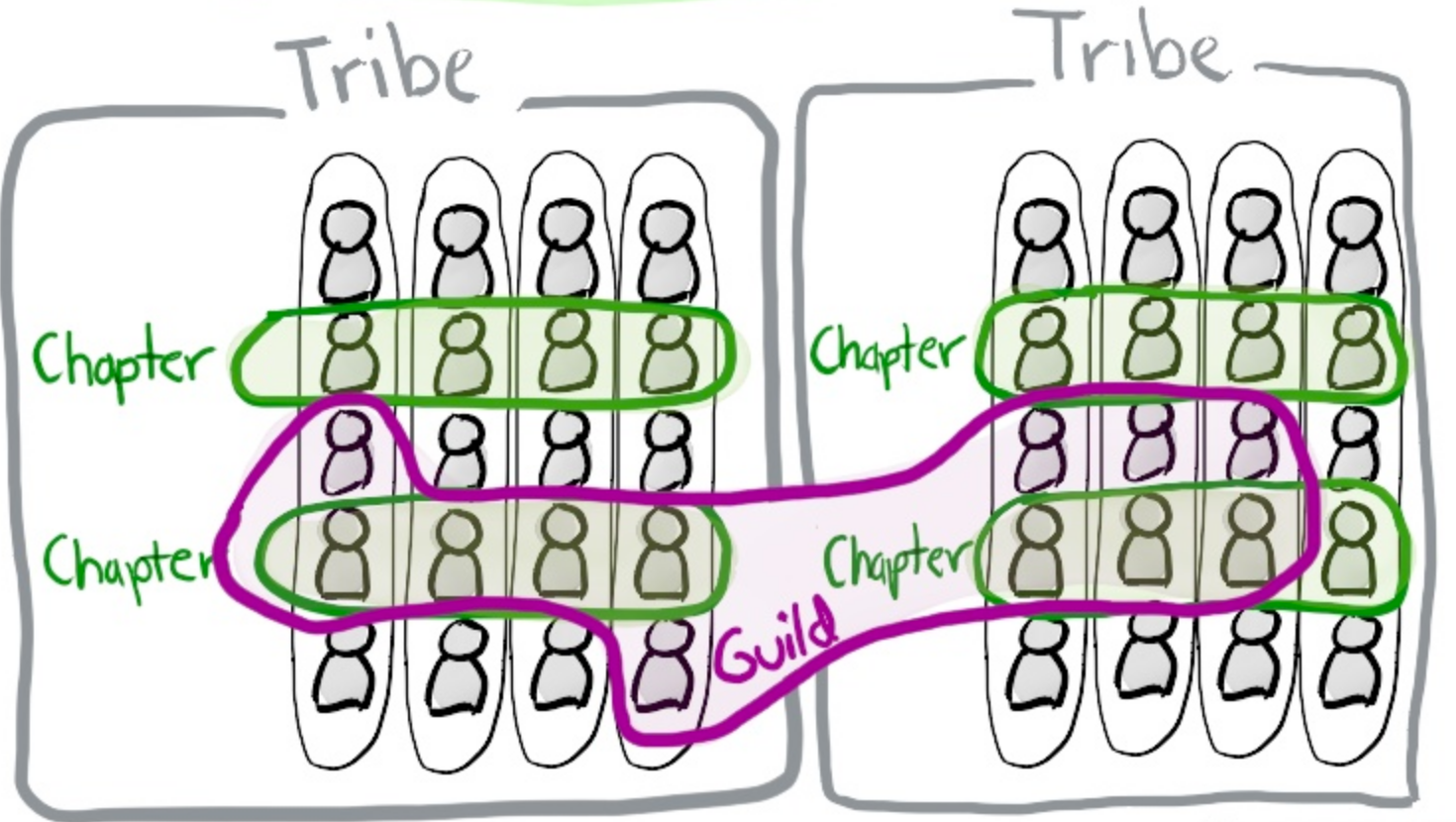
Essence of the Spotify Model
One of the most puzzling things I noticed in 2017 was that there are still a lot of people left who are thinking the Spotify Model is a great idea for their organisation. I think that it is mostly for the wrong reasons you might be thinking about taking up their ideas. But what is it that you should learn from Spotify?
A quick info up-front: This post is mostly fuelled by my frustration growing from getting the same attitude over and over from people and organisations I work with as Agile Coach or Consultant. I regularly get to hear stuff like We want to do the Spotify stuff! or Wouldn’t the Spotify Model fit our organisation? I saw some videos about it!
Why You Should Not Copy
Okay, I’ll focus on this question just shortly, because I do not write the next post that is telling you why the method of work used by Spotify will not work for your business. There are other sources covering it in detail (like here, here or just lmgtfy). So just a short primer on why (in my opinion) you should refrain from following the example of Spotify.
- You are not Spotify (or, if you were you would not think to adopt the model). Spotify is a very unique company in many regards. It was a greenfield company that did recruit people who matched their attitude and thus they ended up with the way they work. If your company is not in the same situation you should not copy, unless you are prepared to not only change your organisational charts, but also are ready to fire a lot of people.
- What they are doing is on at least 破 (ha) or 破 (ri) level. When you are trying to adopt what they are doing you are most likely on 守 (shu). From my point of view their proposed way of working requires you to be at least a 破-Level practitioner. (If you have no idea what I am talking about get a look at Wikipedia
- Only because you’ve seen some videos about it or some paper you do not have enough insight about their style of work
- Form my point of view, Spotify never intended for anyone to follow their footsteps in terms of copying their organisational layout. There is not really much guidance around to follow up on. Just a document and two videos that are just a presentation of a current state, not a guide.
- We don’t know what they are up to now. Are they still sticking to their style of work? How did it evolve? They’ve been pretty silent since the publication of the videos some years ago.
- Are trying to just cover up your matrix-organisation by masking it as something fancy and green? Honestly, think about that.
The Essence
For me, the boiled down essence of the way the work at Spotify is that they managed to stay flexible and Agile at the heart of their organisation. They found a way to form teams and structures in a way that supports their Product Development Cycle as good as possible and enables them to deliver value as fast as possible. The organisational layout they ended up with is the result of the challenges they were facing in their daily business that evolved their mindset. There are fewer unnecessary structures, less formalized lines of report that you have to follow. In some way they managed to get their Value Creation Structure to be more directly tied to their Formal Structure.
In my opinion, that is what we should take with us from the videos and papers of Spotify. It is not a template for the layout of your organisation that matters. The real benefit and thus the essence is, that we need to get rid of non-supporting, clumsy Formal Structures that get in the way with creating value for our business. Align your organisational layout with the way the Value Creation Process works. Furthermore be prepared to change your organisation when necessary, useful or required. Do not stick with structures that does not work for your organisation.
Spotify wants to be the best at getting better. That is what counts. Any structures should follow the purpose of your organisation and you will end up with something that might look different, but may be the best match for you.
So do not work on your structures, work on your mindset first. Be open minded and an open org-chart will be the result.